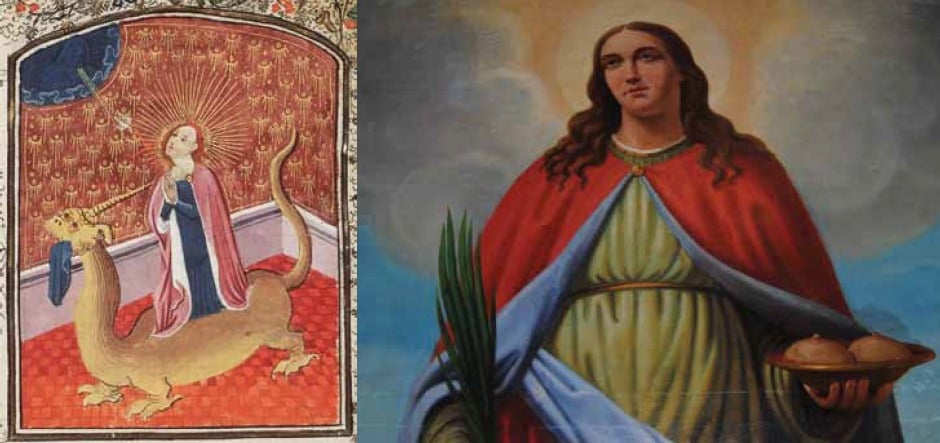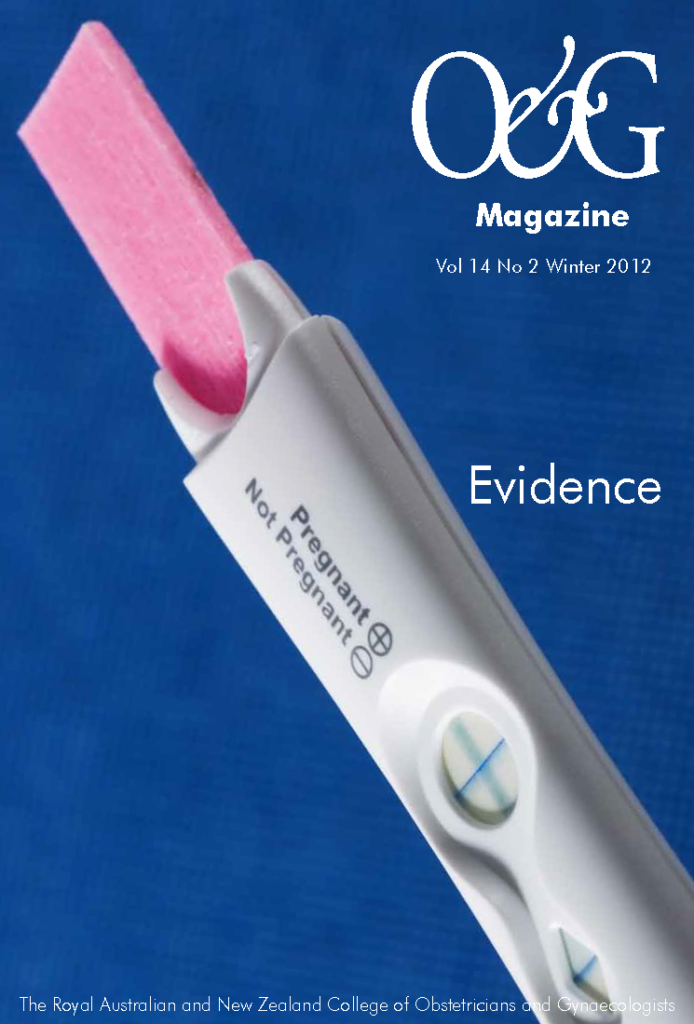In the era before evidence-based medicine, the intercession of saints was regularly sought in times of sickness and suffering.
In the Middle Ages, the whole Christian population was interested in saints. Everyone prayed to them, visited their shrines, paid them honour and sang their praises. This was the era when most of the legends and beliefs concerning the saints were elaborated; many of these persist to this day.
All the Christian saints, major and minor, had some claim to miraculous powers or at least to good works. However, only some had particular medical prowess or interests; it was these who were invoked in the hope of a cure. The intercession of saints was regularly sought in times of sickness or suffering, and the more awful the torture undergone by the saint, the more efficacious the intervention was likely to be.
The story of St Agatha is a classical example of a saint with a reputation for expertise in matters affecting women’s health. Born in the fourth century AD to a noble Sicilian family, Agatha abandoned her pagan upbringing, converted to Christianity and vowed her virginity to Christ. Following the edicts of Imperial Rome, the local Consul, a dastardly fellow called Quintian, tried to persuade her to renounce her faith, and attempted to seduce her by secretly administering an aphrodisiac, but she steadfastly rejected his advances. She was then imprisoned and tortured ‘by rods, rack and fire’; however, she managed to preserve her chastity. As part of her torture her breasts were cut off; fortunately she was miraculously healed by a vision of St Peter, though she died in prison as the result of her suffering.
Very soon her cult became established: she appeared in all the reputable calendars of saints of the time, churches were established in her name in Rome and she was immortalised in mosaic in Ravenna. She became the patron saint of nursing mothers, who prayed for adequate supplies of milk, and of other women with breast diseases, who sought her intervention to affect a cure. In fact for more than a thousand years, women with breast problems turned to St Agatha for help.
What is said to be the veil of St Agatha is preserved in Florence Cathedral. She is still often represented in Italian churches, sometimes veiled, sometimes with her breasts uncovered or in a bowl. She is also beautifully portrayed in stained glass in the 13th-century cathedral of Clermont-Ferrand in France.
Agatha’s effectiveness at curing breast disease would probably not long withstand the scrutiny of today’s techniques of scientific medicine: all analyses would be retrospective only; no randomised controlled trial would be approved by an ethics committee; insufficient documentation exists for a meta-analysis; and histological proofs of diagnosis are non-existent. Yet hagiologists those who study the lives of the saints – would affirm that over hundreds of years, many women did gain some relief, temporary or permanent, from prayers and visits to the shrines of St Agatha; certainly, there is a basis in our current knowledge of the physiology of lactation for believing that women might by prayer have increased their milk supply.
No doubt many of the ‘cures’ apparently obtained by pilgrimage or prayers to saints are easily explicable in terms of inaccurate diagnosis, placebo effect or of psychosomatic influences. However, the belief that saints could intercede with a higher god on mundane matters did provide, in an age when evidence-based medicine was unknown, hope and comfort; qualities still avidly sought by patients today.
In this way saints Leonard and Margaret might have assisted with difficult or prolonged labour, areas in which they were both believed to be effective. Leonard lived an ascetic existence in a forest in Noblac, France. One day King Clovis came to hunt in this forest, accompanied by his wife Clotilde, who was taken short in labour (perhaps she got her dates wrong). Fortunately, she was safely delivered by Leonard; so grateful was her husband the king that he granted Leonard as much land as he could ride around in one night on a donkey, on which the budding saint built an abbey. Leonard thus became the saint to be addressed by pregnant and birthing women generally, whereas St Margaret is the particular saint of childbirth.
Not much is known about the origins of Margaret, although she is supposed, like Leonard, to have lived in the fifth century. She is reputed to have been the daughter of a pagan priest from Antioch, who turned her out of home when she converted to Christianity, whereupon she became a shepherdess. Several dramatic stories were told about her, including one of her having been swallowed by a dragon, which later split asunder, freeing her. She is often depicted in churches and cathedrals in the company of the dragon.
Reading stories of the life of St Margaret aloud to labouring women was said to reduce the pain of contractions, and frequently candles were lit for the saint during difficult labours. When it seemed that prayers to her had been answered it was usual to give thanks to St Margaret by placing the dried umbilical cord on her shrine postpartum.

Typical depictions of Saints Margaret (left) and Agatha (right): St Margaret, the patron saint of childbirth, was prayed to during difficult labours, while St Agatha was the patron saint of nursing mothers.
Another saint of interest to obstetricians is St Anthony. Ergot, the product of a fungus that grows on grain, especially rye, has been known for hundreds of years to be useful at bringing about uterine contractions and, therefore, effective at preventing and treating postpartum haemorrhage. However, bread made from affected rye can also be the cause of acute ergot poisoning and there were extensive epidemics of ‘ergotism’ in Europe in the Middle Ages, the origins of which were not recognised at the time. The strongly vasoconstrictive properties of ergot caused intense burning pain in sufferers of ergotism, as well as gangrene of the hands and feet, which in severe cases became black and mummified and dropped off. Spontaneous abortion also frequently occurred.
St Anthony himself was a third-century Egyptian hermit who lived a simple life in the desert by the Red Sea. In his own lifetime he had no connection with ergotism, but his name was taken by an order of monks, the Antonite Hospitallers, which was founded in the 12th century. These monks travelled widely across medieval Europe, collecting alms and establishing hospitals that, among other things, treated sufferers from ergotism, which became known as St Anthony’s fire. What were said to be the saint’s bones were sprinkled with water or wine that was then drunk by those afflicted, with apparently good results. It seems, however, more probable that they were cured by the Hospitallers providing a diet free of contaminated rye. Whatever the cause of such cures, spontaneously amputated limbs were often left at St Anthony’s shrines as offerings of thanks and evidence of the saint’s powers.
Readers of O&G Magazine may also like to know of St Stephen who is the saint to pray to for relief of a hangover. Stephen is something of a generalist – he is good for all kinds of headaches and, having been stoned to death, he has skills in the area of renal and ureteric colic and other symptoms of urinary stones. Other saints of interest include Catherine, the patron saint of nurses. She is renowned for her torture on the wheel (although how many Australian children now would know what a Catherine wheel is?) In fact Catherine’s wheel of torture broke down, injuring spectators, and she was subsequently beheaded. Milk not blood flowed from her severed head, hence the nursing association. St Vitus is the patron saint of those who suffer epilepsy and fits, though whether his powers extend to eclampsia is not recorded. St Barbara protects against sudden death. Her father, vehemently opposed to his daughter’s conversion to Christianity, was struck dead by lightning; his daughter therefore became protectress against such calamities.
If all else fails, there is always St Jude, patron saint of hopeless cases, who restored speech to the mute and cured leprosy. Even today, praying to St Jude may be as effective as some complementary medical therapies. And, like all his saintly colleagues, Jude offers comfort and consolation, qualities that should not be overlooked by practitioners of evidence-based medicine today.
Further reading
Attwater D. The Penguin Dictionary of Saints. London: Penguin, 1964. Farrer DH. The Oxford Dictionary of Saints. Oxford: Clarendon, 1964. Jockle, C. Encyclopaedia of Saints. London: Alpine, 1995.





Leave a Reply